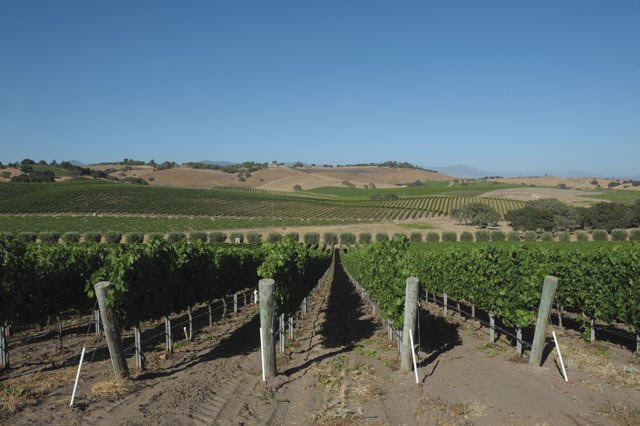Santa Barbara Ag’s Disappearing Act
Does Agriculture Have a Future?

Agriculture has been one of the mainstays of Santa Barbara County for centuries. It has adapted and changed as the economy and culture of the county have evolved. We are now at a point where outside forces and local policy decisions are adversely impacting agriculture’s viability and future.
We have seen the disappearance of dairy farms and cattle ranching. Now thoroughbred horse ranching is in a downward spiral due to offtrack betting and the increase in Indian and Las Vegas gaming. Bay Meadows Racetrack in Northern California is a housing development. The venerable Hollywood Park Racetrack is on its way to becoming a football stadium.
In the last century, Lompoc was the seed capital of the world with household names like Bodger and Burpee, and with fields ablaze with color. All of the seed companies have gone — some out of business, the rest overseas due to a lack of profitability.
The orchard industry is disappearing due to the concentration of the grocery store industry that needs thousands of cases of any crop they buy. The few remaining small family apple orchards survive by direct-to-consumer (DTC) sales, either through roadside stands or “you pick ’em” operations. When walnut trees reach the end of their productive life, they are not replanted. Recently, olive orchards were planted. However, the county’s prohibition on consumers visiting the olive mill has impacted DTC sales, and olive orchards are stagnating.
One bright spot for agriculture has been row crops and hoop-tunnel berry crops. However, external forces are adversely impacting the economics of this bright spot. Federal and California increases in the minimum wage and overtime are eroding profitability. These increased costs will be phased in over the next several years. This will give farmers the time to reduce labor with machines or relocate to other states or countries. It is unlikely consumers will pay significantly more for California broccoli and strawberries.
Both the state and federal regulators have continued to restrict the use of chemical pesticides and fertilizers. The result is reduced productivity and blemished fruits and vegetables. Some grocery companies have started to promote “ugly” produce in the hope the public will buy it.
The above are not “the sky is falling” rhetoric. This year, increased costs and diminished produce quality caused four Oxnard farmers to cease farming their 2,500 acres with the loss of more than 1,000 jobs.
The other bright spot in Santa Barbara County agriculture has been the wine industry. Wine sales generate sales tax and attract visitors who pay bed taxes. However, as the four-plus years of endless planning department meetings have shown, a significant number of county residents object to farming in general and to DTC wine sales in particular. As to farming, the complaints are about lights, noise, dust, and spraying disturbing the peace of the “neighborhood.” On the western border of Lompoc, a farmer has houses on two sides and an elementary school on the other. His property is for sale.
As to DTC wine sales, the objection seems to be that visitors destroy the peace and quiet of the neighborhood, even though it is zoned agriculture, not residential. In 1995 there were 1,800 U.S. wineries of which 950 were in California. Also, there were 3,000 distributors — 1 and a half for each winery. In 2015 there were 8,600 U.S. wineries with more than 4,000 in California. However, in this 20-year period, 2,325 distributors went out of business, leaving just 675 distributors — one for 12 wineries. Four distributors sell 60 percent of the wine to retail stores and restaurants. Grocery stores sell 30 percent of wine to consumers. Distributors and grocery stores want thousands of cases, not a few hundred. Without DTC sales, the small family winery will not survive.
Absent positive local support for farming and direct-to-consumer sales, in about a dozen years most agriculture, including small family wineries, will disappear, like their brethren the ranches, orchards, and seed companies. As we all know from the San Fernando Valley, when agriculture is not sustainable it is replaced by housing and shopping malls



